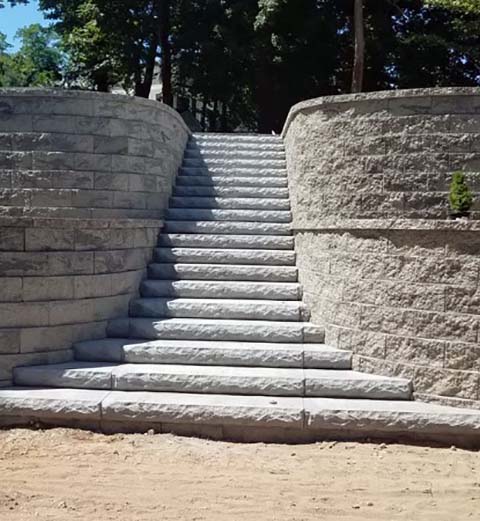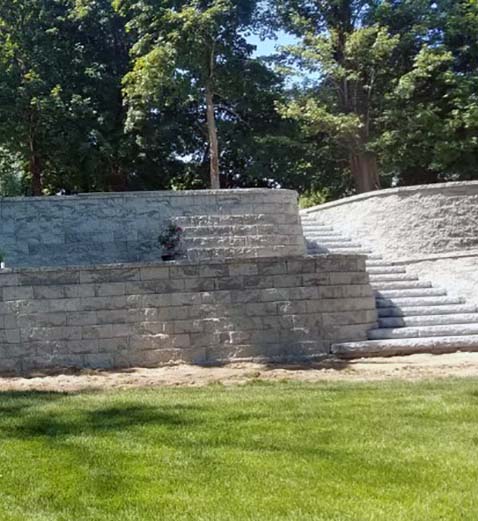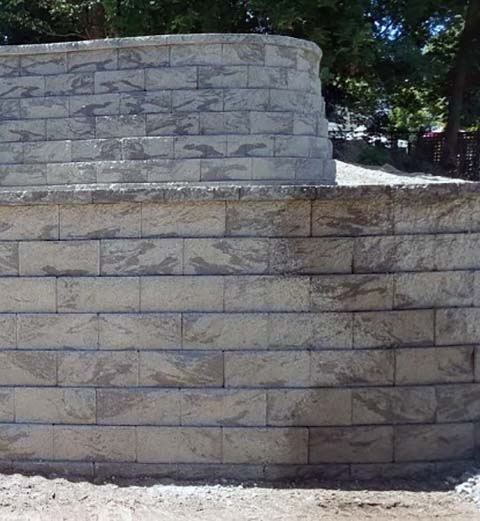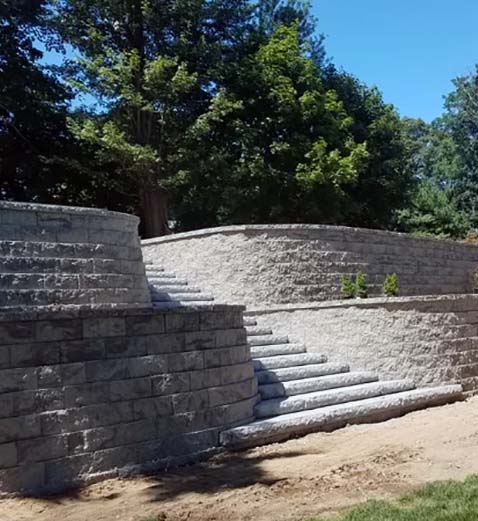CONCRETE PAVERS
Considering Concrete Pavers?
Learn more below about concrete paver styles, construction and installation and maintenance for creating patterned surfaces. If you’re considering concrete pavers for your home, use the following information to determine if they are the best option.
What Are Concrete Pavers?
Concrete pavers, often referred to as paving stones, are a popular outdoor flooring option. Similar to tiles, pavers are manufactured in specific shapes, sizes and colors and arrive on site ready to be installed. Pavers are most commonly installed over a compacted base of soil and sand. Because there isn’t any grout between the joints, concrete pavers offer a permeable surface that allows water to pass through. However, this also means that they may shift over time and that weeds could grow between the stones. Hiring a professional paver contractor to install your pavers, rather than laying them yourself, is the best way to protect your patio, driveway or sidewalk from these concerns.
Concrete Pavers Are A Great Choice
The use of concrete pavers is growing rapidly on both commercial and residential construction projects. Interlocking pavers form a patterned surface which can be put into service immediately. Pavers are manufactured in various textures and colors. A big benefit of pavers is that they can be removed and re-installed, which reduces future service interruptions. Pavers can be installed on your driveway, on a walkway, and on a patio. Pavers come in a variety of patterns, colors and styles to suit most any design idea.
Concrete Paver Styles
Concrete pavers come in a literally endless number of styles. Pavers are often manufactured and supplied on a regional basis and thus the same paver may not be available throughout the country. The same project can use two or more different colors of concrete pavers. Textures can also be mixed.
Concrete Paver Designs
Designers choose paver styles to harmonize with the surrounding area. Two colors of pavers can be combined to provide interest in large areas. Pavers also come in blended colors to add interest. Pavers are similar to other colored concrete, or brick products: shade variations may occur. This can result from slight variations in dye lots and the raw materials used. Install pavers from several pallets at a time.
Here are some additional design considerations:
- Pavers can be selected to complement the stone or facade on the building.
- Oftentimes, pavers one or two shades lighter than the structure are selected so as not to compete for attention with the structure.
- The use of brick pavers with wood or stone houses adds warmth.
- Pavers can have different textures and are combined to add appeal.
- Avoid long straight rows of pavers.
- If straight runs are required, lay the edge pavers parallel to the edge of the path and use a basket weave pattern in the interior.
- For Victorian style houses, repeat the curves of the arched windows and doors by designing curved edges.
- For rectangular colonial styles, repeat the shape by using brick-shaped pavers.
- For brick homes, select pavers lighter than the brick used on the home or use cobblestone.
Concrete Pavers Maintenance & Repair
When installed properly over a well-compacted subbase (see Installing Concrete Pavers), precast concrete pavers will rarely crack, shift or settle under normal foot or vehicle traffic. The compacted bed of aggregate beneath the pavers will help prevent settlement, and the joints, or gaps, between the pavers will allow for expansion so the pavers will not crack due to freezing and thawing.
Pavers can settle in spots over time if they aren’t installed properly over a stable subbase. However, they can easily be reset by removing the affected pavers and regrading and recompacting the subbase. Pavers can also be removed and reinstalled in this manner if utility repairs are required.
Typically, routine maintenance of paver surfaces involves removing dirt and leaves by sweeping and occasional rinsing. For heavy oil or grease stains, use a pressure washer with an appropriate cleaning solution. Depending on weather exposure, you may need to replenish the sand in the paver joints every 2 or 3 years if it washes away due to erosion. If polymer sand is used at the time of paver installation, joint sand addition may not necessary. This special type of sand contains a polymeric additive that binds and hardens the sand and helps to prevent erosion. Sealing concrete paver surfaces will also help to lock in the sand while protecting the pavers from staining. However, sealing does require periodic reapplication depending on the product used and traffic exposure.
In the winter, paver driveways can be plowed or shoveled without dislodgement because they typically have chamfered edges and joints. However, don’t use sharp objects to chop ice, which can damage the pavers. Instead, add traction with sand or apply a noncorrosive deicer, such as calcium magnesium acetate.
Call our expert masons today at 631-520-8356 and we can take a look!
RESIDENTIAL MASONRY PROJECTS


























































SPECIALTY Masonry Services
Contact Lusitania Masonry
Masonry Office
448 Hagerman Avenue
East Patchogue, NY 11772
Masonry Inquiries
For any inquiries, questions or quotes, please call
631-520-8356 or fill out the form below.
Contact Lusitania
Tel: 631-520-8356.Tel: 877-520-5552.
Fax: 631-772-4768.
Email: ada@lusitaniamasonry.com.
Email: carlos@lusitaniamasonry.com.
Employment
To apply for a job with Lusitania Masonry, LLC., please send a cover letter together with your C.V. to: jobs@lusitaniamasonry.com.
Get A Masonry Quote
For a quote, inquiry or question about our services, please call 631-520-8356 or fill out the following form.


